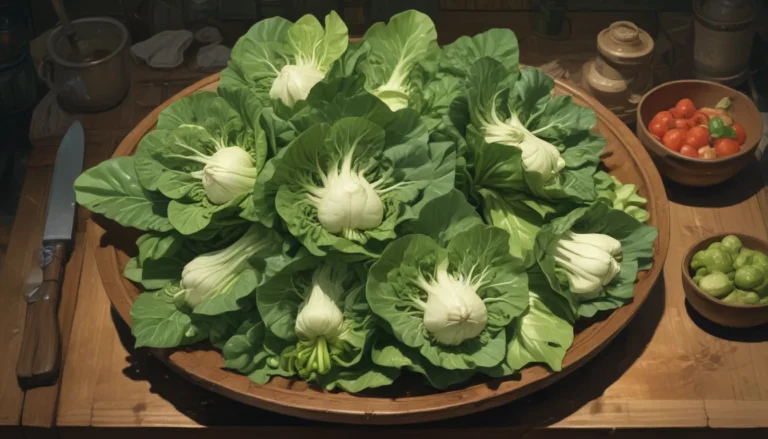A Comprehensive Guide to Growing and Caring for Chinese Evergreen Houseplants

Aglaonema spp.
If you are a fan of houseplants and looking to add a touch of tropical beauty to your indoor space, consider growing the Chinese evergreen plant, also known as Aglaonema, Philippine evergreen, or poison dart plant. This ornamental herbaceous perennial belongs to the Araceae, or Arum family, and is a delightful addition to any home.
With over 20 different species in the Aglaonema genus, Chinese evergreen plants can thrive both outdoors in USDA Hardiness Zones 10 and 11, as well as indoors in all zones. These plants are lush, vibrant, and relatively easy to care for, making them a popular choice among indoor gardeners.
In this comprehensive guide, we will explore all the necessary information you need to successfully grow and care for Chinese evergreen plants in your home. From cultivation and history to propagation, growing tips, pruning and maintenance, cultivar selection, and managing pests and diseases, we’ve got you covered. Let’s dive right in!
What You’ll Learn
- Cultivation and History
- Propagation
- How to Grow
- Growing Tips
- Pruning and Maintenance
- Cultivars to Select
- Managing Pests and Disease
- Quick Reference Growing Guide
Let’s start by taking a closer look at the cultivation and history of Chinese evergreen plants.
Cultivation and History
Chinese evergreen plants are prized for their lush foliage and vibrant colors, making them a popular choice for indoor gardening. However, it’s essential to note that these plants are poisonous to both humans and pets and should not be consumed under any circumstances.
These tropical beauties thrive in organically rich, well-draining, slightly acidic soil with a pH of 5.6 to 6.5. For indoor cultivation, achieving this soil mix is easily done with high-quality potting soil.
Chinese evergreen prefers partial to full shade and thrives in locations with bright indirect or diffuse light. They also have a high tolerance for low-light conditions, making them versatile indoor companions.
In their natural habitat, Chinese evergreen plants have an upright, clumping growth habit, reaching between one to two feet tall and wide indoors. The leaves can range from eight to 12 inches long and come in various shades of green, pink, red, and white.
While Chinese evergreen plants rarely flower indoors, they may occasionally produce an inflorescence with an elongated whitish spadix surrounded by a greenish spathe. Some gardeners choose to leave these flowers, while others prefer to trim them to encourage foliar growth.
Historically, Chinese evergreen plants found their way to Europe through plant hunters and botanical explorations. These plants were cultivated at renowned botanical gardens, showcased in royal landscapes, and eventually made their way into 18th-century Victorian parlors in America as prized ornamental specimens.
Propagation methods for Chinese evergreen plants include seed starting, stem cuttings, division, nursery starts, or tissue culture. Let’s explore these options in more detail.
Propagation Methods
From Seed
Starting Chinese evergreen plants from seed is not commonly done by home gardeners due to the challenges involved. The seeds need to be harvested when ripe and kept moist until germination, which can take up to 60 days.
From Stem Cuttings
Stem cuttings are a popular and more accessible way to propagate Chinese evergreen plants. By taking a stem cutting from a mature plant and rooting it in water or a rooting hormone, you can easily create new plants.
By Division
Dividing mature Chinese evergreen plants is another effective propagation method. By separating the plant into smaller sections with roots attached, you can rejuvenate the original plant while creating new ones.
From Nursery Starts
Purchasing nursery starts from local garden centers or online retailers is a convenient way to introduce Chinese evergreen plants into your home. Transplanting them into suitable containers is a simple process that can yield rewarding results.
By Tissue Culture
Propagation through tissue culture is a specialized method performed by scientists to replicate the exact traits of a plant in a laboratory setting. This technique results in clones of the parent plant and is often used for hybridization and cross-breeding.
Now that you have your Chinese evergreen plant potted up, let’s delve into how to care for them to ensure they thrive in your home environment.
How to Grow Chinese Evergreen Plants
Once you have potted your Chinese evergreen plant in a suitable mix of potting soil, it’s crucial to provide it with the proper care and conditions for optimal growth.
Chinese evergreen plants prefer temperatures between 70 to 80°F during the day and a minimum of 65 to 70°F at night. They also thrive in humid environments, so ensuring a humidity level of at least 30 percent is essential for their well-being.
Keep your Chinese evergreen plant in bright indirect or low light settings, as they are tolerant of both conditions. Watering practices vary depending on light exposure, with low-light plants requiring less frequent watering than those in bright indirect light.
During the growing season, which typically occurs in spring and summer, fertilize your plant with a well-balanced indoor plant food to support healthy growth. Avoid fertilizing during the winter dormancy period to prevent nutrient imbalances.
Pruning and maintenance play a vital role in keeping Chinese evergreen plants healthy and vibrant. Prune any damaged or discolored leaves, dust the foliage periodically, and repot the plant as needed to prevent root-bound conditions.
When selecting cultivars of Chinese evergreen plants, you’ll be greeted with a plethora of options ranging from green to variegated with pink, red, and white hues. These colorful varieties offer a unique aesthetic to your indoor garden and can be grouped together for a stunning display.
Managing pests and diseases is an essential aspect of caring for Chinese evergreen plants. While these plants are relatively pest-resistant, common culprits like aphids, mealybugs, scale, and spider mites can occasionally appear. Using insecticidal soap or neem oil is an effective way to control these pests and prevent further damage.
Diseases such as anthracnose, bacterial leaf spot, and Myrothecium leaf spot can be avoided by keeping the foliage dry and using balanced fertilizers. Monitoring your plant for signs of disease and addressing them promptly is crucial to maintaining a healthy indoor garden.
In summary, Chinese evergreen plants are versatile, low-maintenance additions to your indoor space. By following the essential care tips outlined in this guide, you can ensure your plants thrive and bring a touch of tropical beauty to your home.
Whether you choose green-leafed varieties for low-light areas or vibrant variegated cultivars for bright spaces, Chinese evergreen plants offer a lush and lovely presence in any room. So, go ahead and start growing your own Chinese evergreen plant to experience the joy of tropical gardening indoors!





